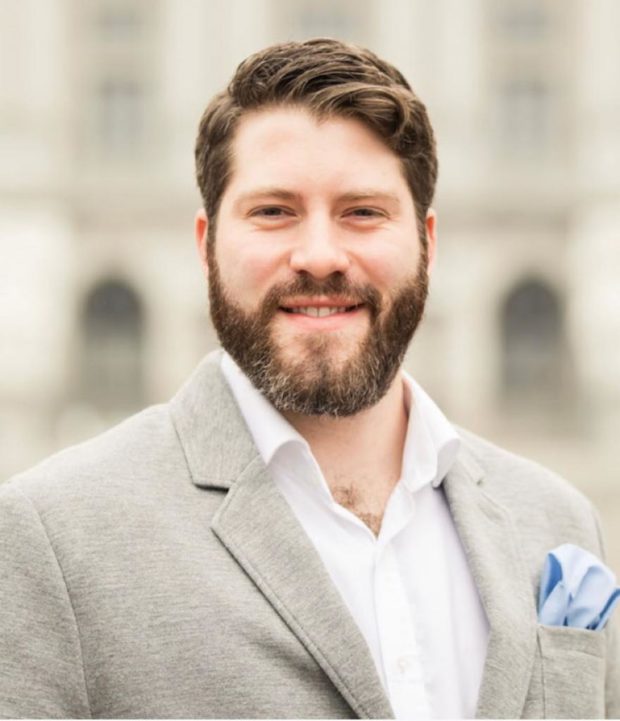
Yaël Ossowski, deputy director at the Consumer Choice Center. Contributed photo
Cigarette smoking in the United States went up for the first time in two decades amid the persistent public health lobby against less harmful alternatives such as e-cigarettes and heated tobacco products, according to an international consumer advocacy group.
“Nothing has been more egregious and harmful in our current age than the public health lobby’s persistent denialism of the harm reduction value of nicotine vaping products and other alternatives to cigarettes,” Consumer Choice Center (CCC) deputy director Yaël Ossowski said in a blog post on the organization’s website.
The 2020 Cigarette Report of the Federal Trade Commission showed that cigarette sales in the United States reached the highest in two decades. The total number of cigarettes sold by major manufacturers rose 0.4 percent in 2020 to 203.7 billion units from 2019. It represented the first increase in cigarette sales in 20 years.
Ossowski said the persistent public health lobby against harm reduction or the use of less harmful alternatives and aversion to innovation were likely behind the increase in cigarette sales.
“Smoking is up for the first time in a generation. The public health lobby is to blame,” said the Washington D.C.-based organization that supports lifestyle freedom, innovation, privacy, science, and consumer choice; and focuses on main policy areas such as digital, mobility, lifestyle and consumer goods, and health and science.
The CCC also denounced public information campaigns demonizing vaping devices, misinformation on lung illnesses caused by tainted cannabis cartridges, bans, restrictions, and taxes on flavored nicotine products (especially those without tobacco), Kafkaesque market authorization applications handled by the drug regulators, and a never-ending crusade to deny adult consumers from having access to life-saving products because of illicit and risky behavior by teens.
“Whatever your conclusion, the trend that lowered the percentage of US smokers down to 14 percent in 2019 when the last complete nationwide survey was completed is halting. And that should concern us all,” the CCC said.
“These public health bodies, anti-smoking groups and allied journalists, whatever their intent, have sought to convince the public that not only is smoking bad and dangerous—an easy admission—but also that alternative nicotine devices like vaping products, nicotine pouches, and heated tobacco are just as or even riskier than a pack of smokes,” the CCC said.
It said these conclusions are contrary to scientific evidence and real-life experience of passionate vapers who have quit smoking.
“The public health mission to muddy the popular perception of nicotine alternatives such as vaping, which is scientifically proven to be 95 percent less harmful than cigarettes, is causing actual damage to American public health,” the CCC said.
The CCC said aside from the 2020 Cigarette Report, a highly concentrated study pointed to an increase in teen smoking in a jurisdiction where flavored nicotine vaping was outlawed. A study published in JAMA Pediatrics found that more teens took up smoking after San Francisco banned flavored vaping and tobacco products.
The study noted that “San Francisco’s ban on flavored tobacco product sales was associated with increased smoking among minor high school students relative to other school districts.”
The CCC blamed trusted public health sources and news outlets for alleging that vaping, an alternative that millions of adult consumers are now using to quit smoking is just as dangerous. There are also reports from top publications highlighting the “comeback” of cigarettes among the bourgeois hipster crowd in Brooklyn, New York amid the misconception that switching back to cigarettes would be healthier than vaping.
It said the persistent public health campaigns, echoed by headline-grabbing media outlets, to demonize and restrict access to vaping has led to a predictable rise in smoking rates, both among adults and teens.
“Whatever your view on whether vaping devices, heated tobacco, snus, or nicotine pouches are the most attractive and effective gateway away from smoking, this recent uptick in smoking demonstrates actual harms result when politically-charged health lobbies seek to extinguish market alternatives. And we must ask why they persist,” the CCC said.
It said that while public health groups, along with affiliated journalists and researchers, were opposing harm reduction, vape shop owners, makers of vape liquids, gas station owners, vaping technology firms, tobacco firms pivoting to alternative products, and an entire creative class of vaping influencers both on and offline are trying to give smokers a second chance at a long life.
“These are the true heroes of harm reduction in the 21st century,” the CCC said.
“If we want to reclaim a true public health victory and help smokers quit to give them long and fruitful lives, it is time to cast aside this aversion to the innovations of the market. The future health of our nation depends on it,” the organization said.
RELATED STORIES
Vape bill gives 16 million Filipinos a chance to evade harm from smoking
Opposition to Vape Bill may exacerbate smoking, top Filipino doctors say
Medical groups ask Duterte anew to veto vape bill
Survey affirms Filipinos’ support for life-saving vape bill